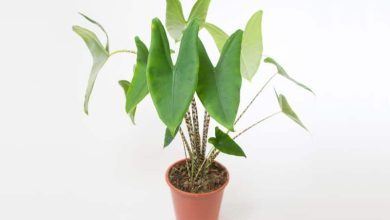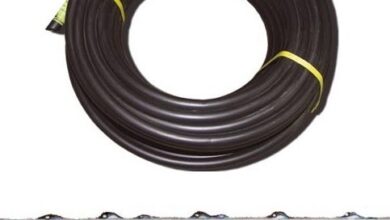Potato Beetle: [Identification, Elimination and Prevention]
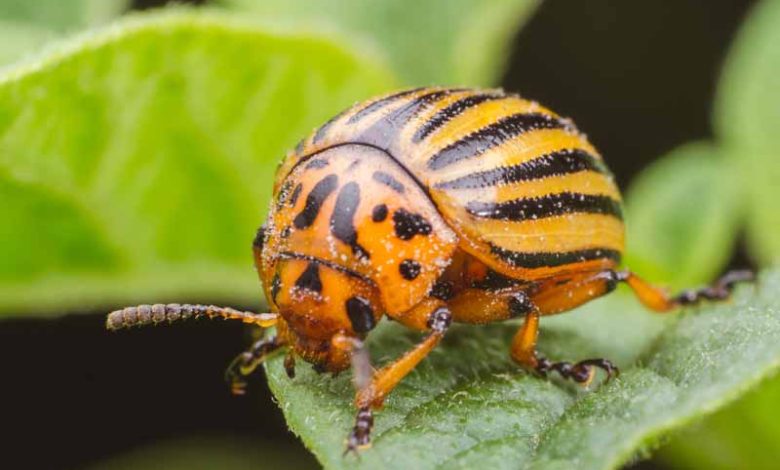
What is potato beetle?
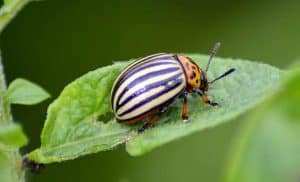 The potato beetle is scientifically known as Leptinotarsa decemlineata.
The potato beetle is scientifically known as Leptinotarsa decemlineata.
It is a centimeter-long insect with a wide worldwide distribution that attacks potato plantations, causing considerable damage to crops.
It is a beetle of the chrysomelid family, whose origin dates back to the 19th century in Mexico and in the Rocky Mountains of the United States.
In Europe it is known as a result of the importation of potatoes to this continent, which indicates that the potato beetle spread to the same extent as the plant.
This species was first known as the Colorado beetle, but was later renamed the potato beetle. It is considered a formidable enemy of the plantations and in Europe it is considered that it must be attacked in time because it is capable of causing a great famine on the continent.
In the campaign to eradicate it, a gigantic and very well organized offensive of men and material has been deployed, which has made it possible to contain it.
How can we identify it?
Morphological characteristics
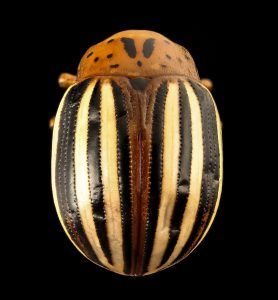 It has a reddish-brown head and its shell is covered in yellow and black stripes.
It has a reddish-brown head and its shell is covered in yellow and black stripes.
It has a laying pattern consisting of five dark stripes per elytra on a yellowish background, making it identifiable due to this detail.
It reproduces quickly, as it can lay two thousand or three thousand eggs on the underside of potato leaves. However, it does not do it all at once, but lays about twenty or thirty eggs on each of the leaves.
Like the particular color of its shell, its eggs also have a very striking orange color, while the larvae are reddish.
behavior pattern
It is especially identified by the way it attacks crops. The larvae, when hatching, cause considerable damage, since the eggs feed on the leaves.
Therefore, one of the ways to detect it is to observe the way in which the leaves are nibbled and rolled up, which is an unequivocal symptom of a pest attack.
activation time
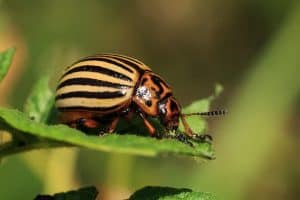 The potato beetle overwinters as an adult in the soil and becomes active with the arrival of spring; It has three generations a year, depending on the weather and the region.
The potato beetle overwinters as an adult in the soil and becomes active with the arrival of spring; It has three generations a year, depending on the weather and the region.
The duration of its development depends on the temperature, because fifteen days after the eggs a colored larva emerges and two brown lines on each side.
After a four-stage process is produced, the first of which is almost two millimeters in length and in the fourth it can reach eight millimeters; Already at this stage the larva has reached its maximum development, reaching a lighter color.
What crops does potato beetle affect?
The beetle is an insect that mainly affects potatoes, but it also affects other solanaceous plants such as aubergines and tomatoes.
If it is not attacked in time, it causes considerable damage that can even result in rotting of the plant.
How can we combat it?
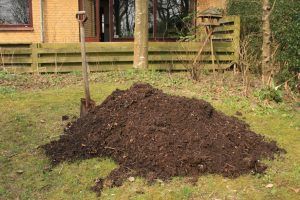 As it is a rapidly evolving pest, we must resort to exhaustive prevention to prevent it from taking possession of the plant, putting into practice rotations.
As it is a rapidly evolving pest, we must resort to exhaustive prevention to prevent it from taking possession of the plant, putting into practice rotations.
Do not repeat cultivation in some years and carry out weed control. Once the pest has taken possession of the plant, in order to control the damage, we must undertake a manual collection of adult insects.
It is also recommended to use specialized products. As potatoes are demanding in organic matter, they are rich in nitrogen which makes them favorites of the beetle, so we must fertilize with abundant and decomposed compost to stimulate the assimilation of calcium by the plant.
What products should we use to eliminate the potato beetle?
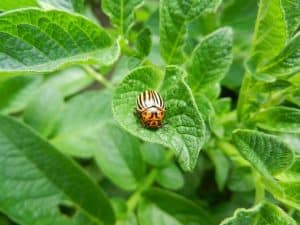 Other measures to take are dusting the underside of the leaves with rock dust or algae powder and sprinkling the first leaves with nettle purin, to strengthen them.
Other measures to take are dusting the underside of the leaves with rock dust or algae powder and sprinkling the first leaves with nettle purin, to strengthen them.
Likewise, we can apply Bacillus thuringiensis, a gram-positive bacterium that appears naturally in the intestine of moths and butterflies.
It also appears on the surface of the plants, from which the Cry toxin is obtained, used as a pesticide on the leaves, where we must make a thorough application, an action that we must repeat in 15 days.
In case of lack of control of the plague, specialists recommend authorized treatments on the larvae, such as Neem, which is applied at dusk.
There are other specialized, ecological products, to which we can turn to solve the problem or, ultimately, consult specialists in the field. Among these products are Sherpa 100 EC, a synthetic pyrethroid whose virtue is its shock effect and which produces good results at low doses.
You can also use Mopilan, an insecticide that paralyzes insects to the point of death.
Bibliography and references
- Kuhne, Stefan; Burth, Ulrich; Marx, Peggy. (2011). Care of organic crops outdoors. Auditorium Publisher. Madrid Spain.
- Soria Carreras, Santiago; Soria Ruiz-Ogarrio, Santiago. (2017). Determination of the health status of plants, soil and facilities and choice of control methods. Auditorium Editions. Madrid Spain.
- Bardia Bardia, Ramon; Valle Arribas, Jose. (1943). An enemy of the potato beetle observed in Ametlla del Vallés (Barcelona). Annals Magazine of the School of Agricultural Experts and Superior of Agriculture and of the Technical Services of Agriculture. Barcelona, Spain. Reproduced from: https://www.raco.cat/index.php/AnalesAgricultura/article/download/233982/316067
- Journal of Toxicology. (2007). Presence of pesticide residues in potatoes and possible repercussions on food. Spanish Association of Toxicology. Pamplona, Spain. Reproduced from: http://www.redalyc.org/articulo.oa?id=91924322

![Photo of Corn Pyral (Ostrinia nubilalis): [Characteristics, Detection, Effects and Treatment]](https://www.complete-gardening.com/wp-content/uploads/2022/08/corn-pyral-ostrinia-nubilalis-characteristics-detection-effects-and-treatment-215x220.jpg)
